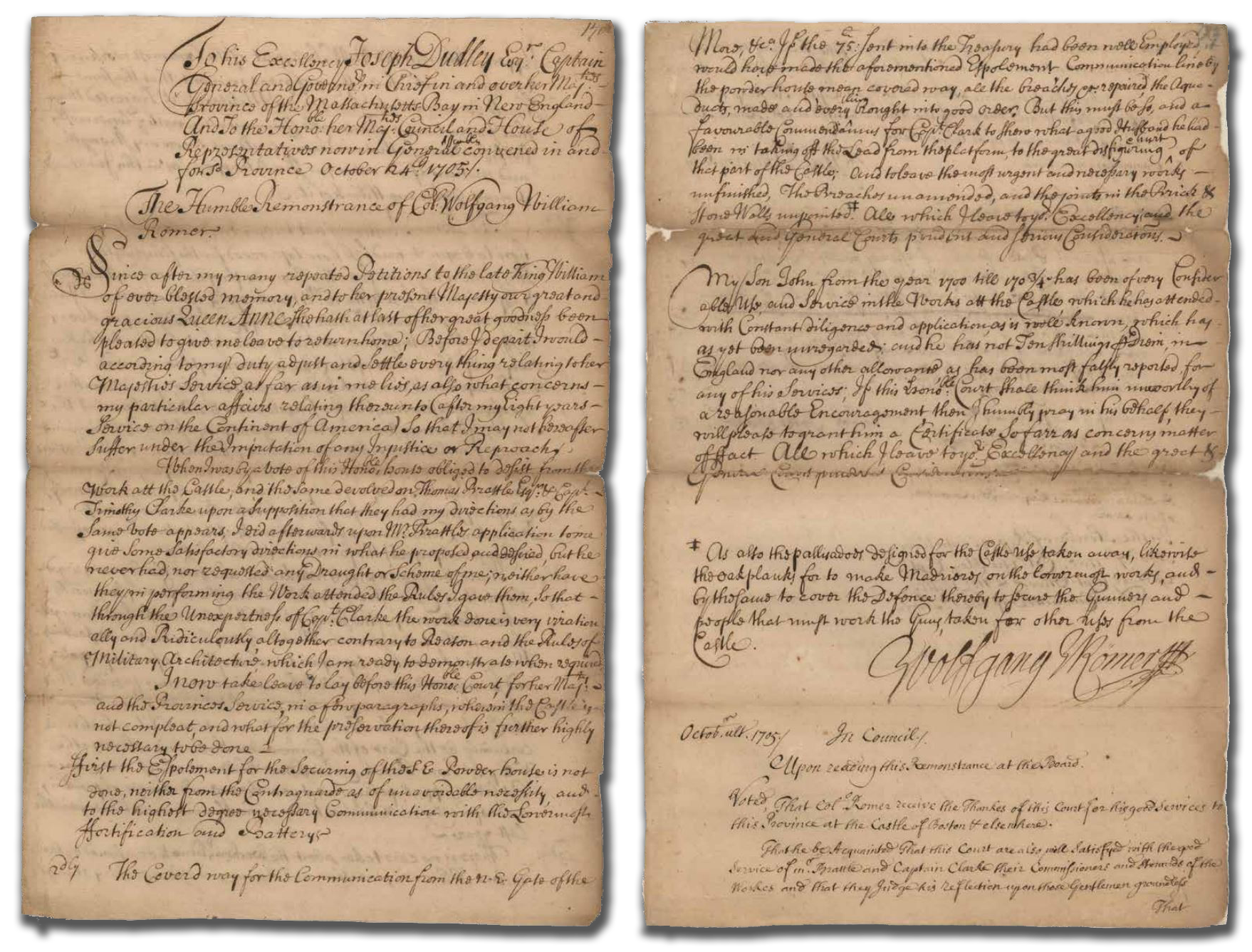In 1691 monarchs William and Mary issued a new charter for the “Province of Massachusetts Bay.” The King ordered improved fortifications for Castle Island, now known as “Castle William” in his honor.
“It seems the Castle is ordered to be called Fort William: and the governor went down yesterday, and caus’d the inscription to be set up, a pretty many guns fired.”
– Samuel Sewall, October 27, 1705
”
- Hampton Court Palace
Culture Clash: Colonel Wolfgang Wilhelm Romer
Early fortifications had a provincial quality. In 1698 Colonel Wolfgang Wilhelm Romer, “chief engineer to their royal majesties in North America,” arrived at the Castle. A professional military officer, Romer was disdainful of the colonists. He complained that the workers followed Captain Clarke’s orders “they must expect their payment of him.” Romer wished to give directions “without like contradiction from Clarke or any other ignorant person who give direction in matters they are wholly ignorant of.” In turn, the puritanical workmen objected to Romer’s profane language.
Romer was here
Castle William
- Official portrait of Chief Justice William Cushing
Justice Cushing’s Decision
Chief Justice Cushing ruled against detaining former slaves. In an explanatory letter to South Carolina, he avoided the terms “slaves” and “property” (not wishing to acknowledge the institution of slavery.) Cushing characterized those remaining in Massachusetts as servants or laborers bound by a service contract. While the Pawley’s were entitled to their service, Massachusetts had no obligation to hold them or pay for their return. The practical effect was to free the “Pawley” slaves because the family did not have the resources to recover them.

After fawning references to the late King William
and present Queen Anne, Romer presents a detailed listing of flaws
in the fort’s construction under the orders of Captain Clarke, “the
work done is very irrationally and Ridiculously altogether contrary
to Reason and the Rules of Military Architecture.” In a hometown
decision the colony’s Council thanks Romer but states “That he be
Acquainted that this Court are also well satisfied with the good service
of Captain Clarke.”
- Massachusetts Archives
